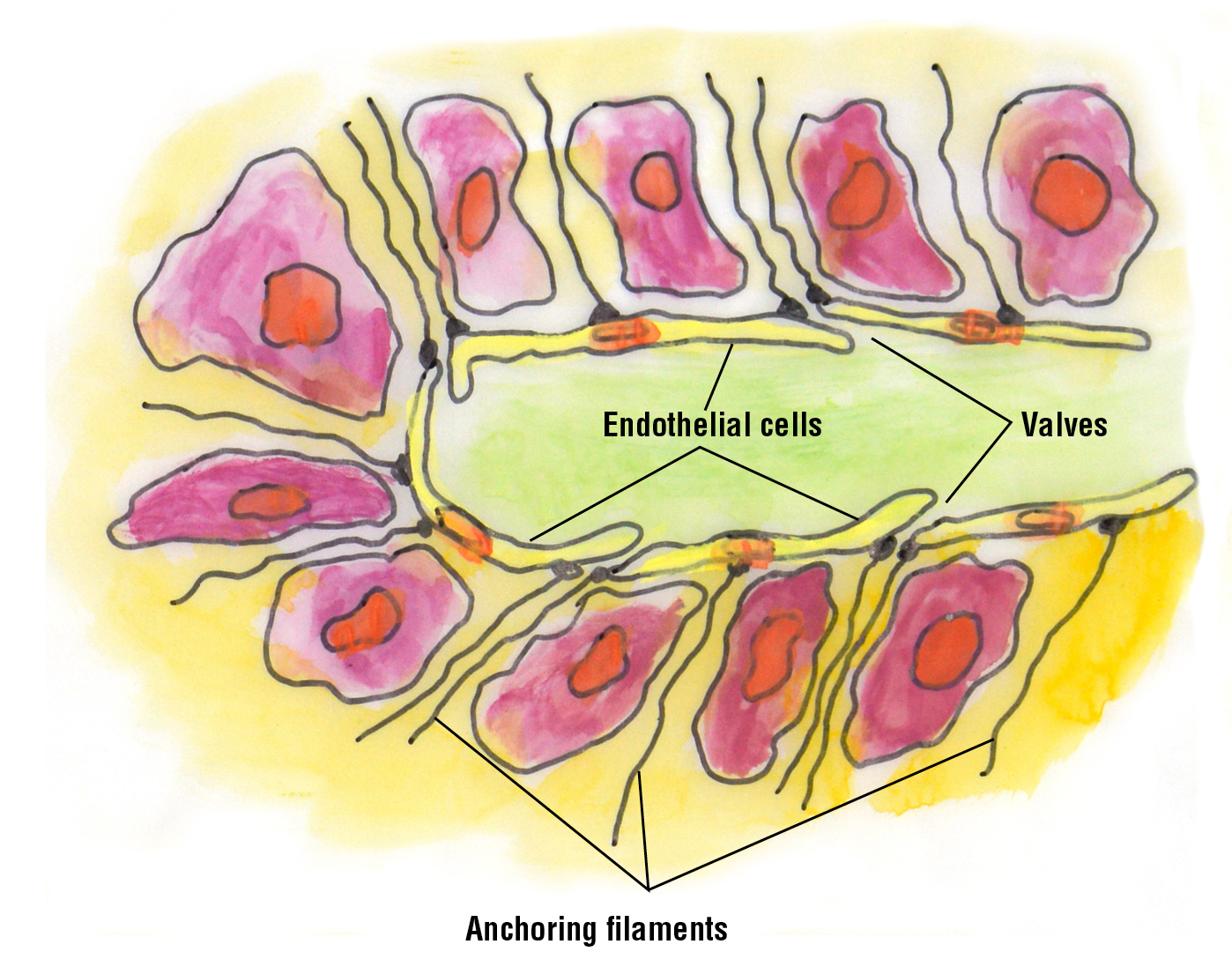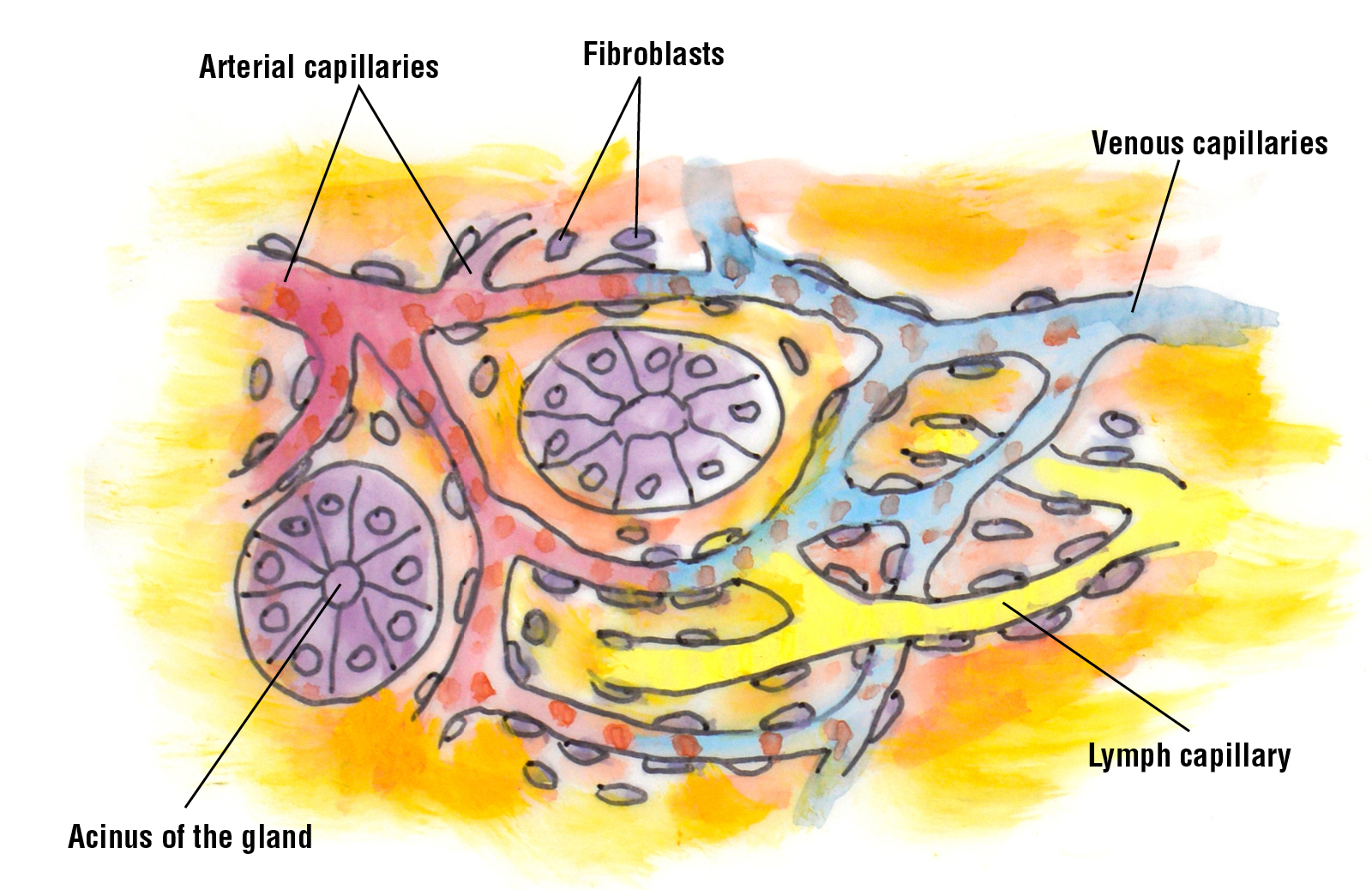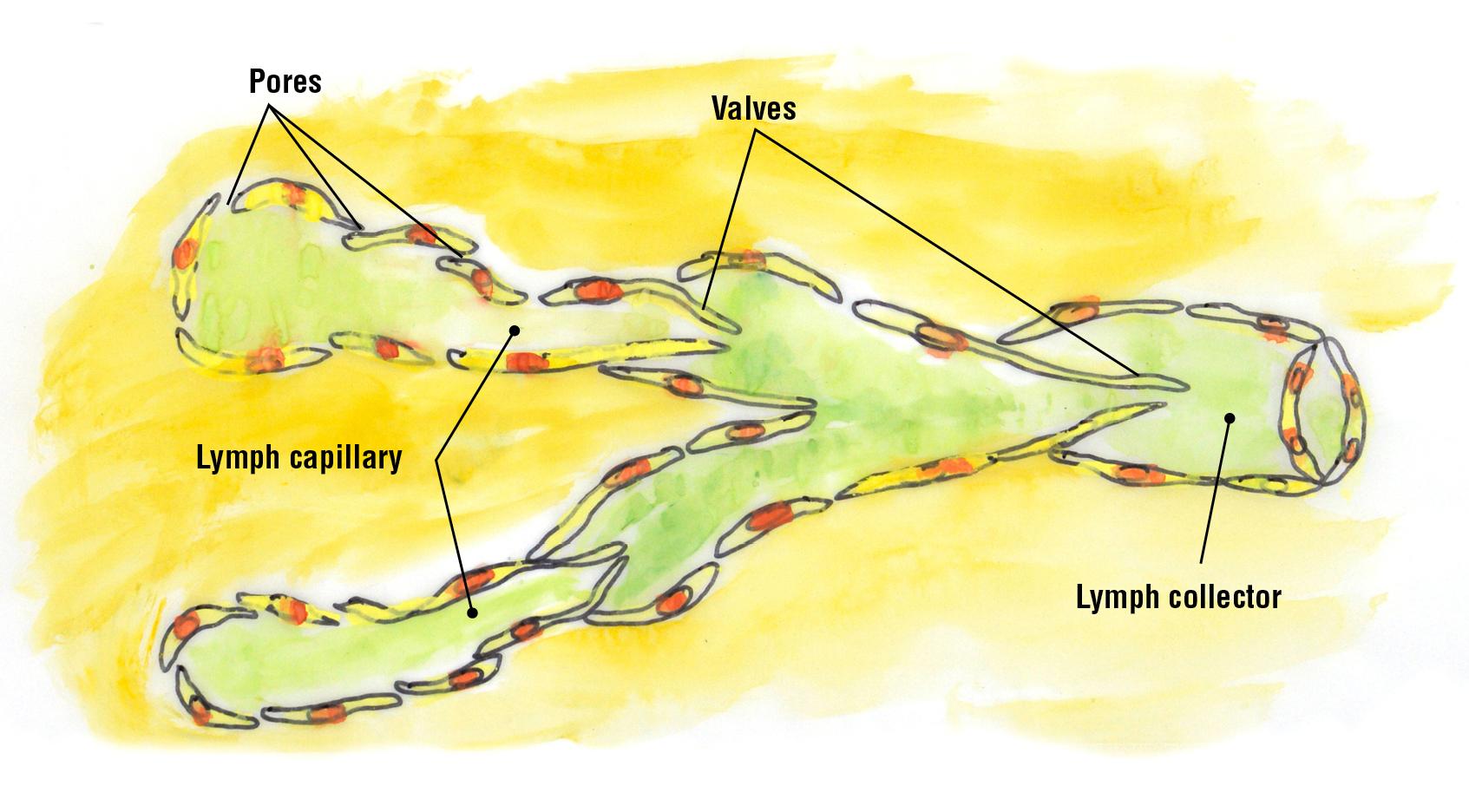

The connective tissue is a tissue of mesodermal origin (lying between the other layers of the embryo: ectoderm and endoderm), which, like an elastic mesh netting, separates, sheathes and supports the muscles, the nerves, the viscera, the organs and the skin.
It consists of a cellular part (mainly specific cells for the immune system) and of a part named matrix (or essential substance) mostly consisting of water and glycoproteins; it is supplied by blood and lymph vessels; it deals with the disposal of the cellular metabolism products and plays a key role for the immune processes.
The connective tissue is one of the four basic types of tissues of the body together with the epithelial, muscular and nervous one.
Its main feature is that it is made up, in addition to cells, of an intercellular substance which separates the cells from one another.
It consists of a cellular part (mainly specific cells for the immune system) and of a part named matrix (or essential substance) mostly consisting of water and glycoproteins; it is supplied by blood and lymph vessels; it deals with the disposal of the cellular metabolism products and plays a key role for the immune processes.
The connective tissue is one of the four basic types of tissues of the body together with the epithelial, muscular and nervous one.
Its main feature is that it is made up, in addition to cells, of an intercellular substance which separates the cells from one another.
This intercellular substance consists in turn of:
- A fundamental, amorphous substance, of a polysaccharide nature, that shapes a kind of gelatinous structure
- A fibrous component represented by elongated structures, immersed in the fundamental substance, distinguishable in collagen, reticular and elastic fibers
Another feature of the connective tissue is that it has vessels and nerves and it is the carrier of them and of other tissues. The connective tissue is almost ubiquitous, as it is to be found in all parts of the body to constitute its framework and support.
In fact, it:
- forms the underlying layer on all coating epithelia (dermis of the skin, typical layer of the mucous membrane);
- wraps the organs forming a shell around them;
- penetrates into the organs constituting the so-called stroma;
- forms the bands, the aponeuroses, the ligaments and the tendons;
- it represents the lining of the organism (subcutaneous tissue, perivisceral fat);
- participates in the formation of the hollow organs (blood vessels, gastrointestinal tract, respiratory tract, urinary tract);
- forms, with its most specialized varieties, highly qualified structures also from a functional point of view (bony skeleton, hematopoietic organs).
All types of connective tissue originate from a particular embryonic tissue, the mesenchyme, which in turn derives from the third germ layer, i.e. the mesoblast (the endoblast and the ectoblast take part to a small extent in the formation of the mesenchyme as well).
The connective tissue performs several functions:
- Mechanical function: connection and support of the various parts of the body, particularly the cartilage and the bone tissue.
- Trophic function: in the connective tissue the blood vessels run, the capillary beds develop and the lymphatic vessels begin.



